By TREVOR HOGG
Images courtesy of Dennis Muren and Lucasfilm Ltd.
By TREVOR HOGG
Images courtesy of Dennis Muren and Lucasfilm Ltd.

At the age of seven, Dennis Muren, VES was taken by his mother to see The Beast from 20,000 Fathoms and The War of the Worlds and was subsequently driven to create cinematic spectacles that did not exist in real world of La Cañada, California, where he grew up. In an interesting career twist, the awe-inspired child would
go onto remake the H.G. Wells alien invasion classic as Steven Spielberg’s ode to the 9/11 attacks and in the process added to his tally of 13 Academy Award nominations, which includes nine Oscar wins (eight for Best Visual Effects and one Technical Achievement Award). Even though essentially retired after a half century in the visual effects industry, Muren is a Consulting Creative Director at Industrial Light & Magic, on the Advisory Board of VFX Voice, and more importantly has retained his childhood fascination in creating believable and narrative effects.
What started off with taking still photographs of toy dinosaurs after seeing King Kong graduated into motion pictures captured on 8mm and 16mm film stock where the teenager would attempt to recreate his favorite movie moments. “It could be a copy of The 7th Voyage of Sinbad,” Muren recalls. “I wanted to bring those experiences back home. It was interesting seeing The Fabelmans because I had forgotten about this completely, [but] the only way we could see it was, you had to find a dark place in your house to look at it. Steven had a closet, which he shows in The Fabelmans. I had a hallway with doors, and you could close all of the doors and you were in the dark. It’s amazing that we all have this shared experience. Steven had never talked about that.”
It was inevitable that The Equinox would get made. “I had completed my first year of college and didn’t want to make another short film during the summer vacation. I just wanted to make a feature film,” Muren recounts. “I realized that Ray Harryhausen’s films are like five sequences that are effects and he finds a writer to fill it all in. I had my friend Dave Allen, a stop-motion guy, and Jim Danforth who could do some stuff. Then I did my stuff. We came up with three sequences that I wanted to do – one stop motion, one forced perspective – and Dave Allen had this puppet we could use. Then we find some actors. Simple. I had $3,500 that my grandfather had saved up for me to go to USC; however, my grades weren’t good enough to go to there. I totaled it all up. Shooting 16mm on my Bolex, we did it the French way, which is silent and incredibly cheap, because then you put the sound in later and that cuts the price down to 10% of what it would have been. I knew it would work and was actually surprised that we sold the movie.”
Getting work in visual effects was not an easy task as the industry was still in its infancy and opportunities were scarce. “I gave up at one point and was going to be an inhalation therapist, which was something I figured I could do,” Muren reveals.“There were no effects movies being made. I got a little work at a union house called Cascade doing commercials for the Pillsbury Doughboy, Jolly Green Giant and Alka-Seltzer. Phil Tippett, VES, John Berg, Dave Allen, Jim Danforth and I were there at that time. It’s important to find your people who like the same things and you learn from each other. Most of us are still really good friends.” Muren pitched himself as a visual effects cameraman. “I never thought of myself as a cameraman, but I could always look at movies and ask, ‘Why is it shot this way? Why didn’t they fix that? It’s obviously wrong.’ If I was doing this, I would make sure that I was the cameraman because he’s the guy with the button, and if it’s not right I’m not pushing it. Which isn’t really the way it was, but it kind of has been that way.”
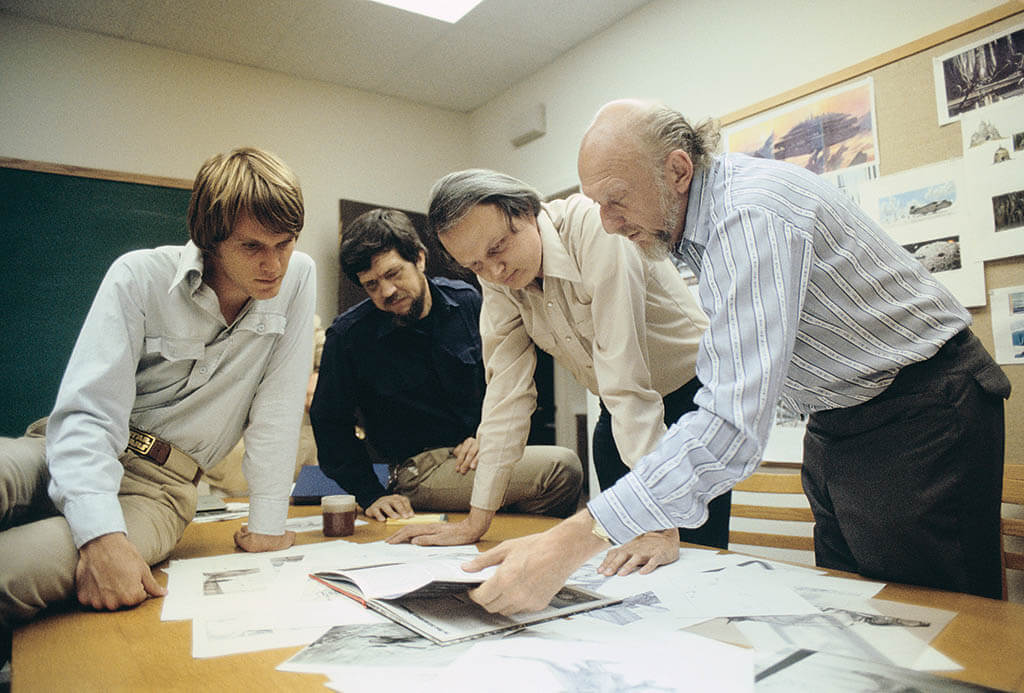
Visual Effects Art Director Joe Johnston, Special Visual Effects Supervisor Richard Edlund, VES and Dennis Muren, VES have a discussion with filmmaker Irvin Kershner about The Empire Strikes Back, with concept art for Cloud City in the background.
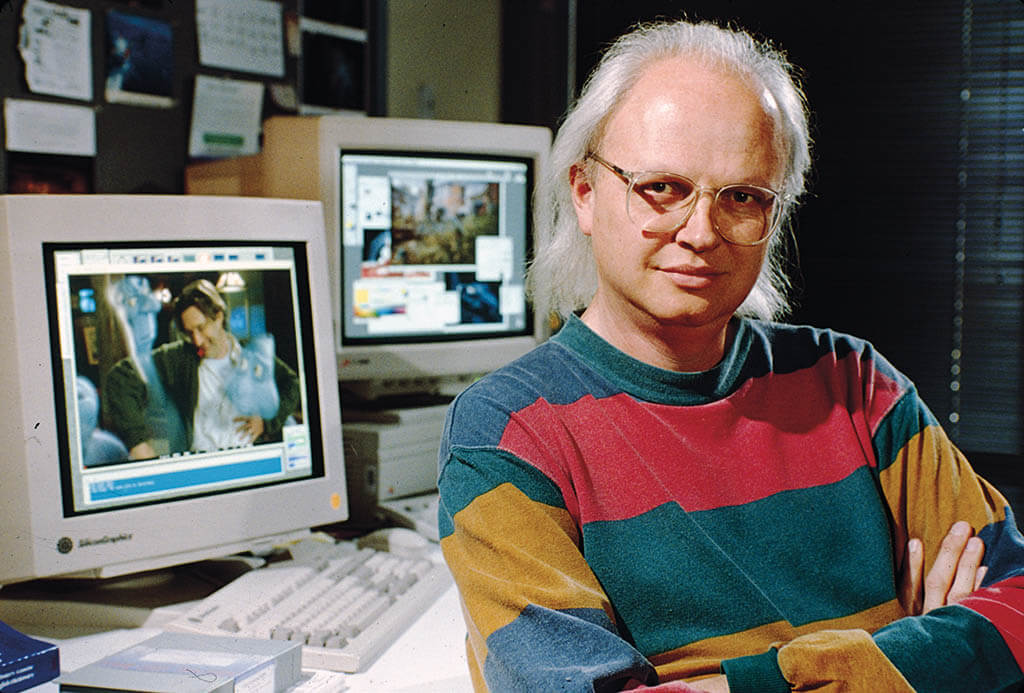
Muren was responsible for the digital character supervision on Casper (1995).

Phil Tippett, VES and Muren on a Go motion set for Dragonslayer, with the technique winning a Technical Achievement Award at the 54th Academy Awards in 1982.
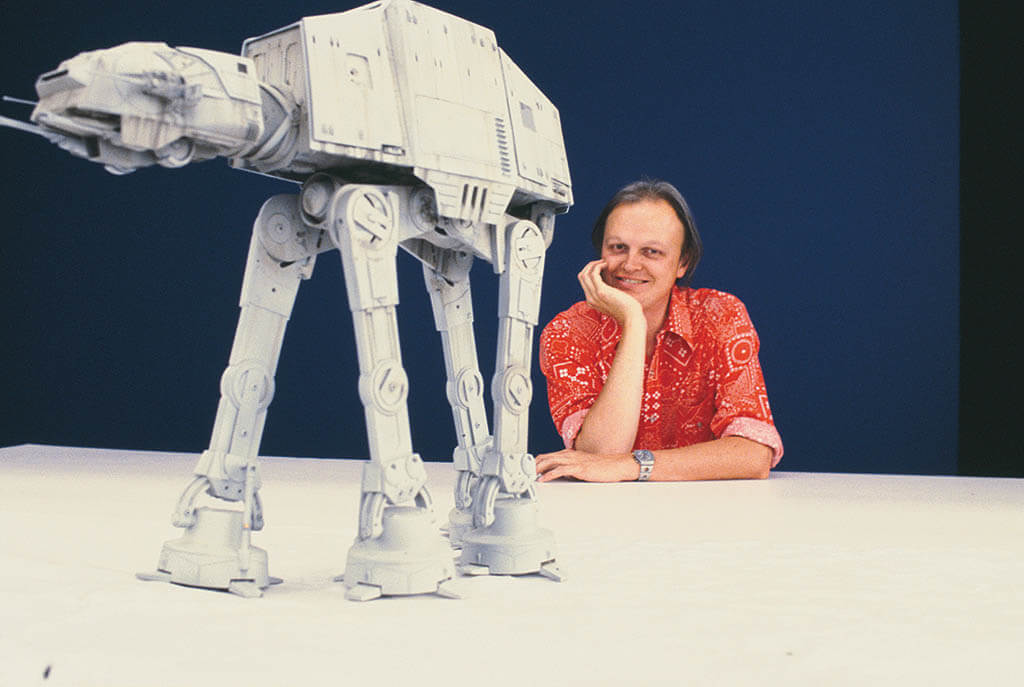
Muren is unfazed by an AT-AT Walker appearing in front of him.
Everything changed when filmmaker George Lucas established Industrial Light & Magic to produce the visual effects for his space opera Star Wars. “I heard that George was doing some sort of effects film, but I didn’t know any of the people working on it or what it was about,” Muren remarks. “I said, ‘I have to get on this show because I want to understand what this stuff is and how it works. I got the number of [ILM Co-Founder/Visual Effects Artist] Robert Blalack, called him up and had an interview. [VFX/SFX Supervisor] John Dykstra thought that my understanding of stop motion would be applicable to this slow camera motion-control stuff that he envisioned for Star Wars, where a motor would take a minute to go through motions, and you would speed it up and slow it down, and when you played it back over four seconds it would look like it was flying accurately. He was right. I could give personality to the ships by having them bank and skid which I thought added a fun factor to the movie.”
Close Encounters of the Third Kind and the end sequence with the mothership was the next project. “I loved working with Georgeand wanted to see what Steven Spielberg was like, and I admired Douglas Trumbull, VES” Muren remarks. “I made sure that the shots got finished in those five months, and they all worked, looked good and matched to the others. We were dealing with light, smoke and mist instead of hardware, speed and energy on Star Wars. Both sides of my brain got boosted in a period of a little more than a year to a new way of looking at things.”
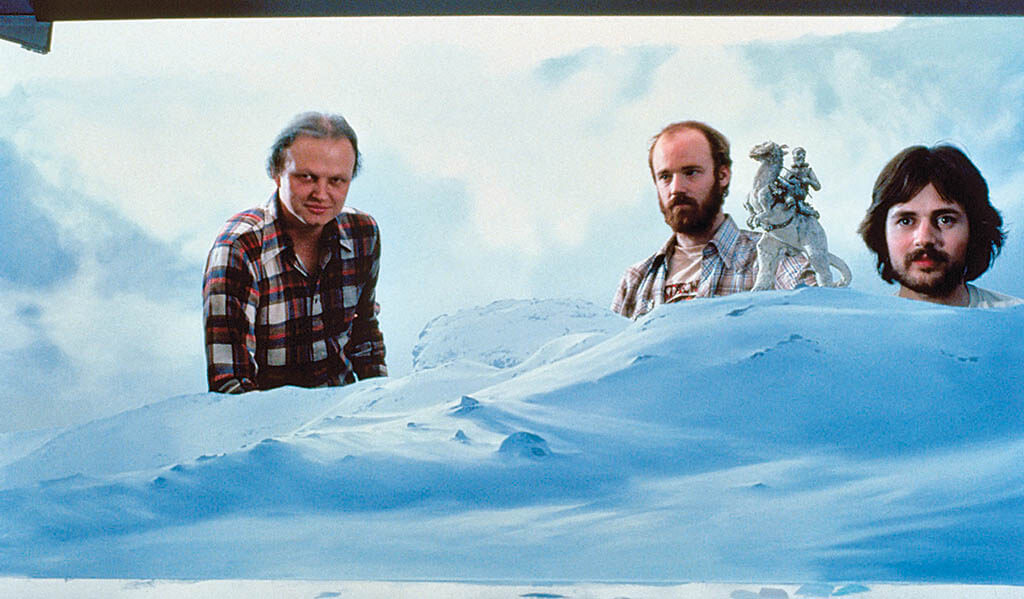
When tasked to incorporate a tauntaun into the aerial photography for The Empire Strikes Back, Muren realized that there was never only one solution.

To achieve the dynamic speeder bike chase in Return of the Jedi, Muren insisted that the plate photography be shot by a Steadicam in an actual forest.

Muren mapping out the CG stained-glass knight sequence from Young Sherlock Holmes (1985).

Muren got to remake The War of the Worlds, which was one of the most influential films from his childhood, with Steven Spielberg.

In order to properly track the T-1000 in Terminator 2: Judgment Day, a grid literally had to be drawn onto the body of Robert Patrick.
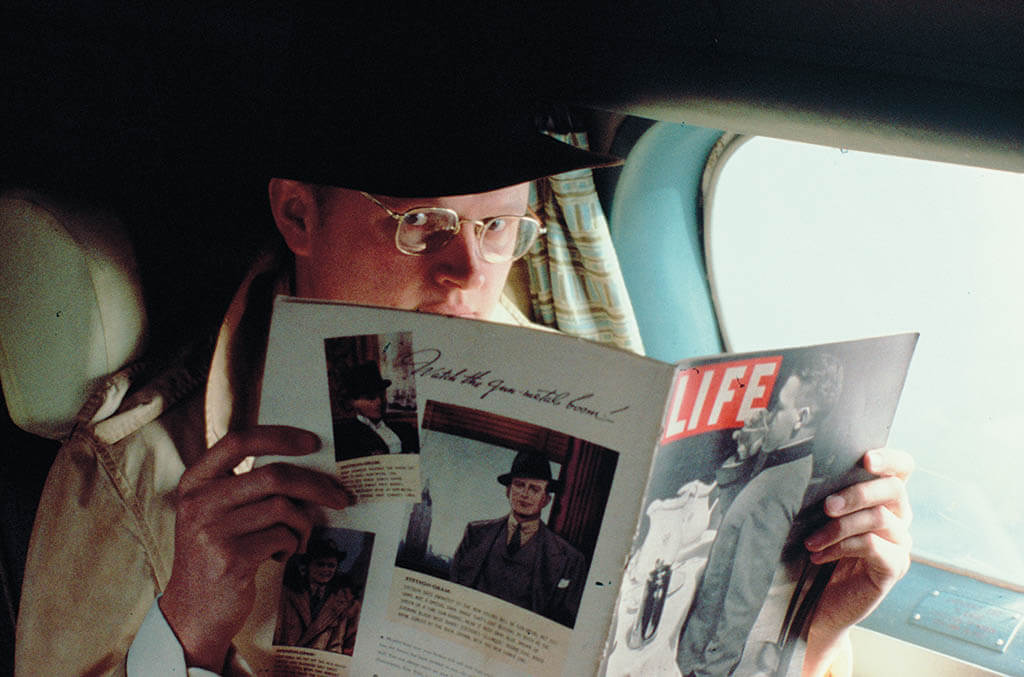
Muren, the actor, in one of the scenes from Raiders of the Lost Ark.
An important lesson was learned when asked by Lucas to insert a tauntaun into one of the opening helicopter shots in The Empire Strikes Back. “I said, ‘There is no way to track those moves because we don’t have any recording of it. It’s all white down there. It’s going to look fake. We should build this as a big model.’ George said, ‘Just think about it.’ And he walked out. Within 15 minutes I had figured out how to do it. I learned so much from that moment. There are many ways you can do everything, but there are usually a few ways that are the best and something only gets you 85% there. Then there is another way to tweak that for the 15% to make it look it’s a 100%.”
For Muren, the real breakthrough for digital effects was Terminator 2: Judgment Day. “CG was something I’d been looking into at ILM since 1983 or 1984. It was always a puzzle and a possibility. We did it, but it was always expensive. It wasn’t until Terminator 2: Judgment Day that we figured out how to make that as something which is repeatable and affordable with a department that could do it.”
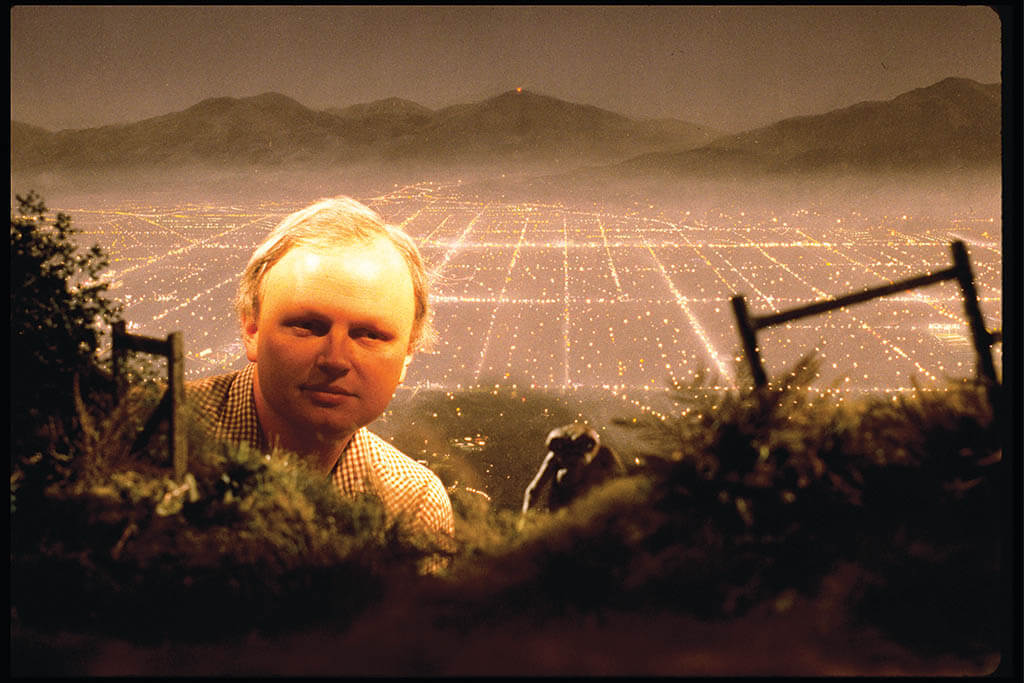
There are times when it is appropriate to heighten the reality of a shot to get the desired emotional moment, which is something that Muren did for E.T. the Extra-Terrestrial.
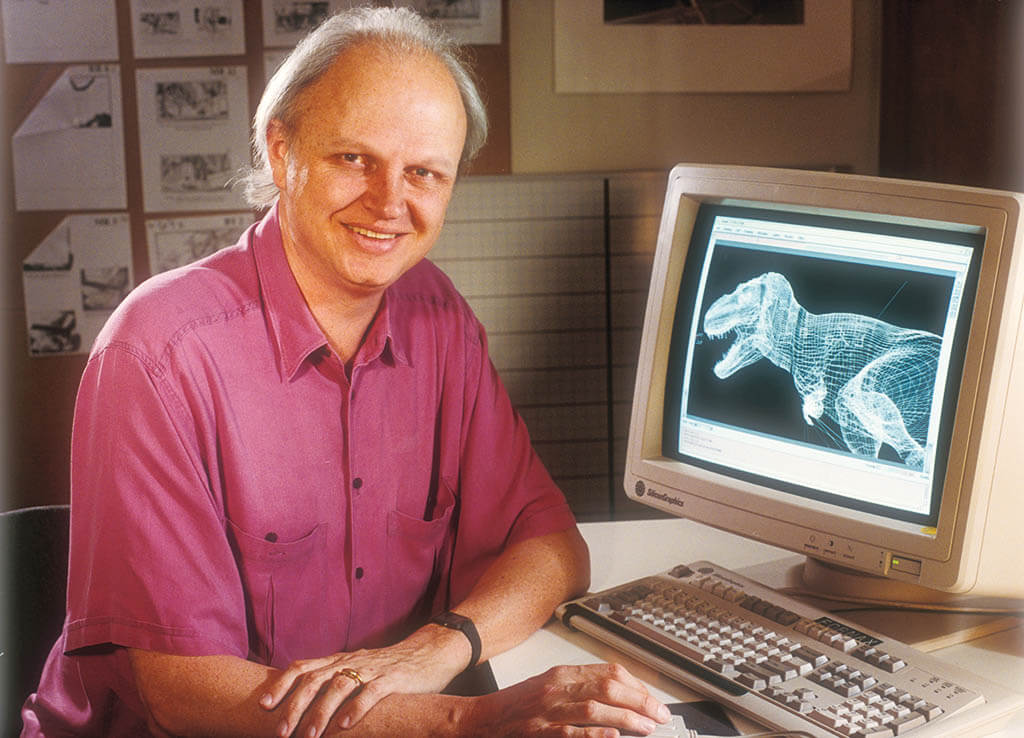
Whereas Muren viewed Terminator 2: Judgment Day as the big CG-character breakthrough, it wasn’t until dinosaurs got resurrected in Jurassic Park that Hollywood finally took notice.
A dramatic moment is when the liquid metal T-1000 transforms and gets temporarily stopped going through metal bars by the gun he is carrying. “Not only that, the room is quiet, so when that gun hits the bar it’s really loud. James Cameron is thinking it through so deeply and does that all the way through. The guy is great.” The studio reaction was surprising. “I was expecting Hollywood to go nuts, and they were like, ‘That was interesting.’ They didn’t know what they were seeing until Jurassic Park and dinosaurs. Everybody loves dinosaurs!”
Visual effects have become a standard filmmaking tool from indie productions to Hollywood blockbusters, which begs the question, “Can you have too much of a good thing? I would certainly say so,” answers Muren. “A lot of the stuff looks fake and the audience doesn’t seem to care. TV shows can have 100 shots in them. It looks like its shot in old Chicago but is really not shot there at all. But we fixed the buildings up and matted people into the settings. That’s great. It’s invisible. However, when you get into this chaotic action where they throw out any sort of thought of gravity, I get bothered by that.”

As with Close Encounters of the Third Kind, Murren got to shoot a dramatic sequence with an alien spaceship for E.T. the Extra-Terrestrial.
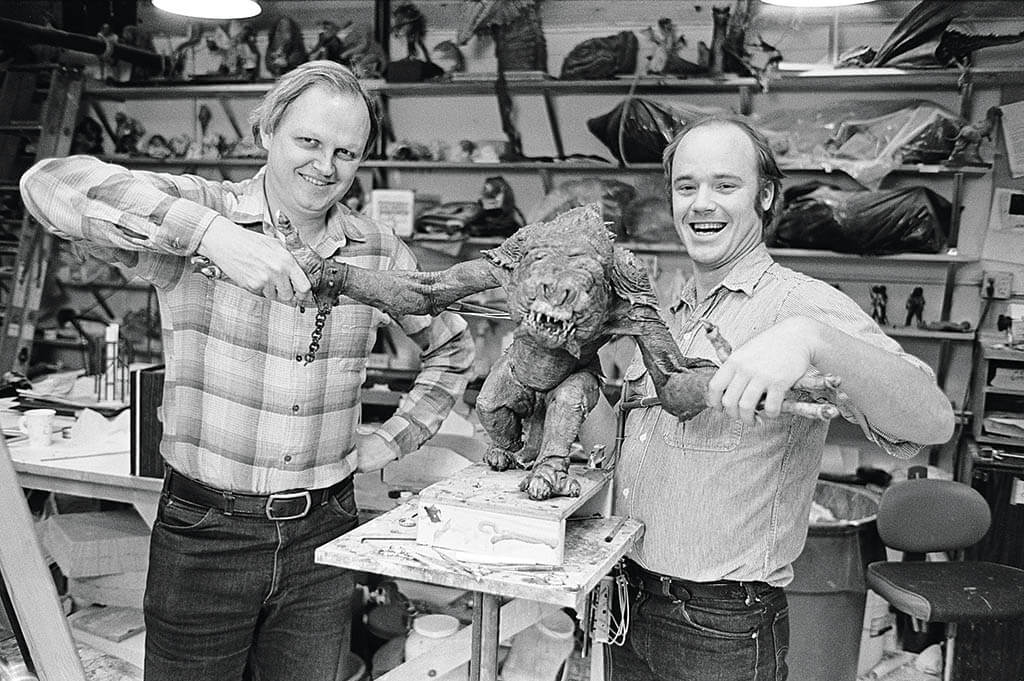
A love for stop-motion animation helped to forge a life-long friendship between Muren and Phil Tippett.
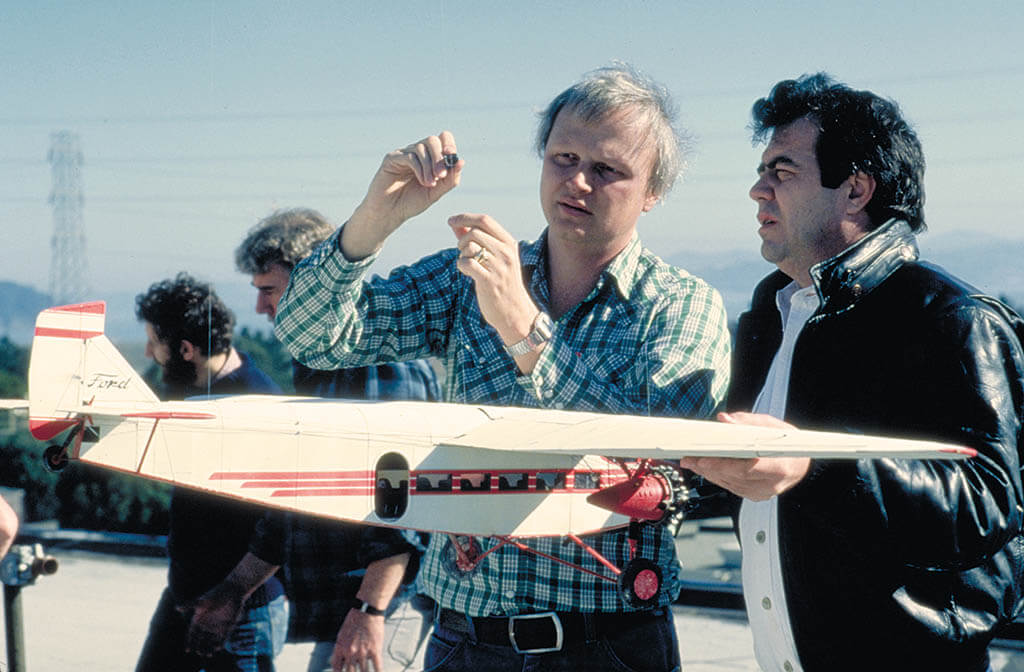
A miniature airplane was used for an aerial shot overseen by Muren for Indiana Jones and the Temple of Doom.
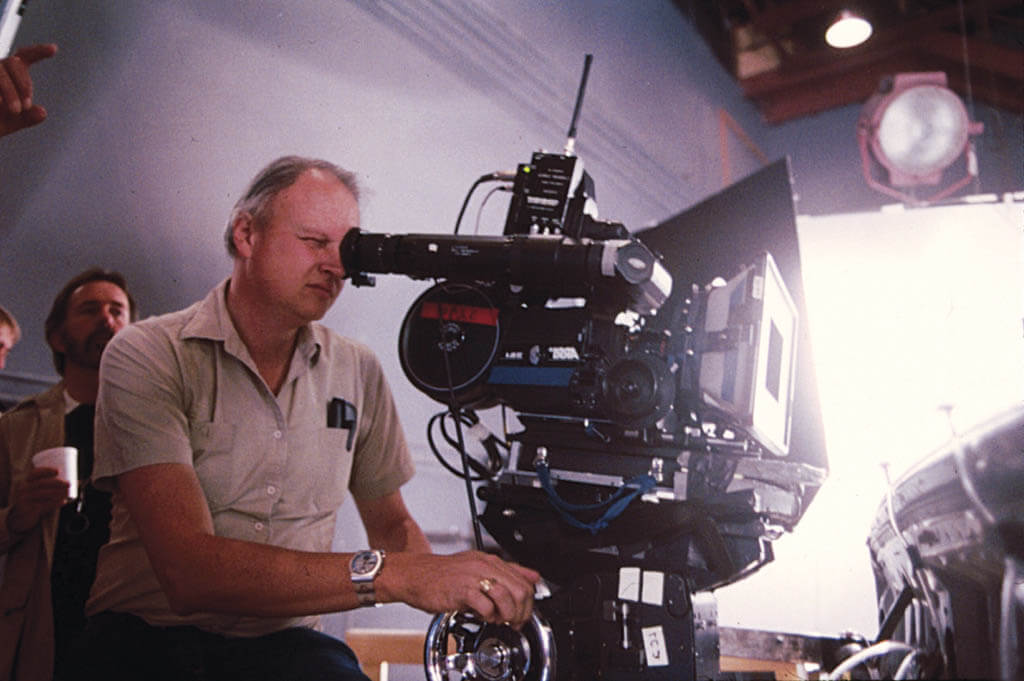
Muren got to do his own version of Fantasic Voyage with Innerspace (1987).
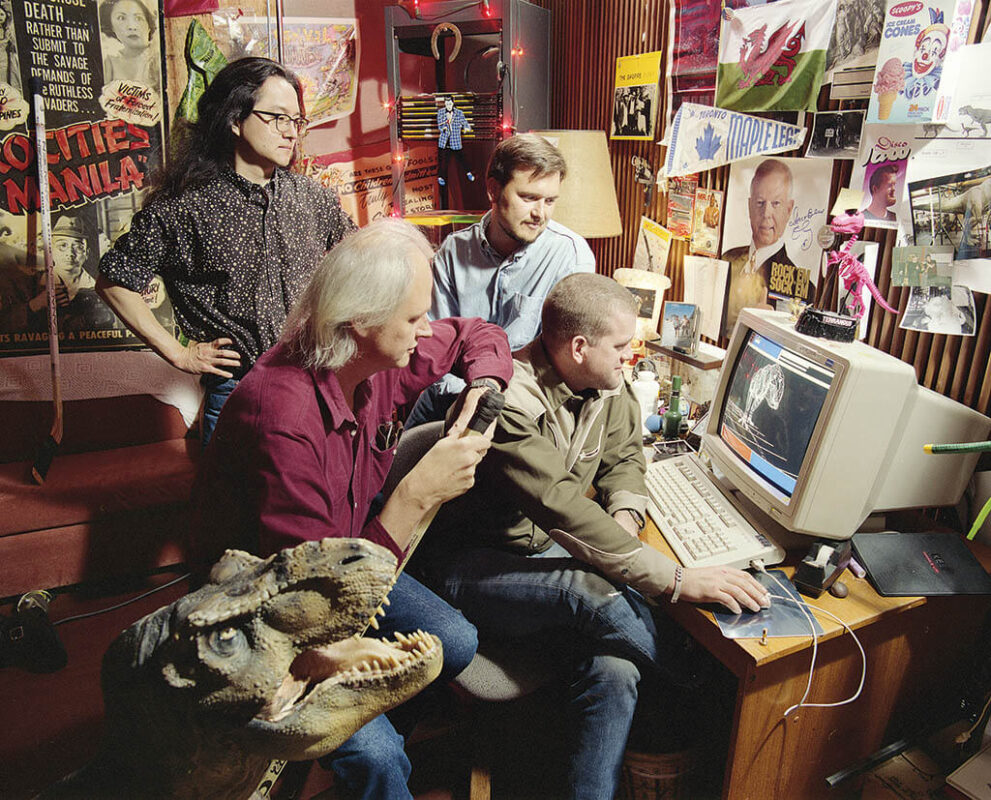
Muren witnesses the CG creature animation that Steve Williams created for Jurassic Park.
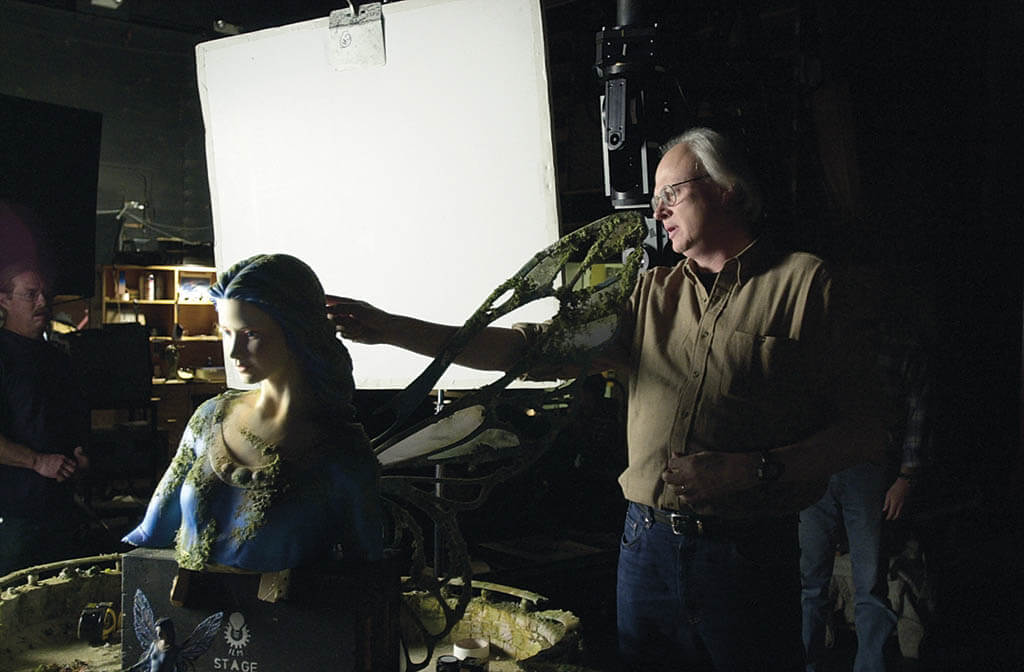
Despite being a digital innovator, Muren has not lost his enthusiasm for in-camera effects as was the case with A.I. Artificial Intelligence.

Getting close and personal with the Rancor from Return of the Jedi.
“CG was something I’d been looking into at ILM since 1983 or 1984. It was always a puzzle and a possibility. We did it, but it was always expensive. It wasn’t until Terminator 2: Judgment Day that we figured out how to make that as something which is repeatable and affordable with a department that could do it….. I was expecting Hollywood to go nuts, and they were like, ‘That was interesting.’”
—Dennis Muren, Consulting Creative Director, ILM
That is not to say that there are great current examples of effects utilized wisely. “The thing that they did so well in Top Gun: Maverick is that they started with the correct initial elements, which was actually having actors in the planes flying out there; they’re really doing it, so there’s lots of surprise and lots of things you don’t see when you’re onstage.” A personal favorite is Bardo by Alejandro G. Iñárritu. “That film just knocks me out. All of the stuff that he is trying to tell is in the effects. The effects aren’t like a storyboard that an effects guy brought to life. No, it’s all emotion that has been revealed at the pacing desired by the director. You have to get into the director’s head and figure out what he is trying to do. That guy is great.”
Technology is continually evolving. “I don’t know where AI is going to go, but it sure is fascinating,” Muren states. “Gaming has surely influenced the film industry, and the films have certainly influenced gaming. To think at one time there were no computers and visualization except for pie charts and text. Now they’re all affecting everything else. With AI you can create images in a movie that are synthetic, and the gaming industry can figure out ways to do it in real-time interactively which is phenomenal. Now we have something coming up that is going to be able to decide what image we want to see and don’t want to see, or look at it 300 different ways based on whatever criteria we can give the AI. What I love is it’s almost out of the lab and schools and into the homes. Once you get people in their homes doing stuff, they’re going to come up with ideas that no one else has thought out. However, people are worried about it for rightful reasons. There has to be checks and balances.”
The imagery should be driven by the story, not the other way around. “It’s about the movie, it’s not the shot you’re doing,” Muren observes. “How does it fit out. What is the emotion of it? For the shot of the kids on the bikes in E.T. the Extra-Terrestrial flying off into the sunset, I made the sun a little too orange and the backlight on the bikes a little too bright. The color palette is amped up a tiny bit because it added a magical feeling that I thought those kids would feel when they were experiencing it, especially when those kids were telling what just happened to somebody. That’s the way it should look. In a lot of Steven’s films, I look at them as amped up in places. Anybody nowadays can take a storyboard or animatic and make it look real with the tools that we have, but it needs to have the truth and heart of the moment that the director is going for. Your shot doesn’t want to overpower the story or take away a moment that could have helped. It’s all subtle. Directors and actors go through it all of the time.Editors are the ones picking out those parts and assembling them together. That’s what filmmaking is. When you get there, then it’s not just the shot is terrific, the movie is terrific. I love movies.”